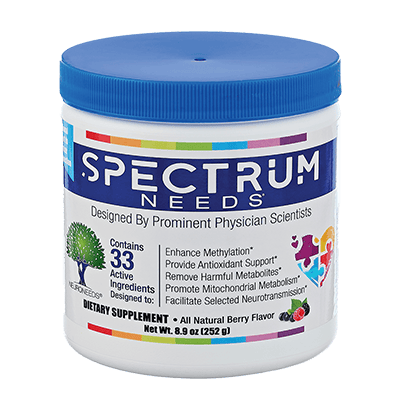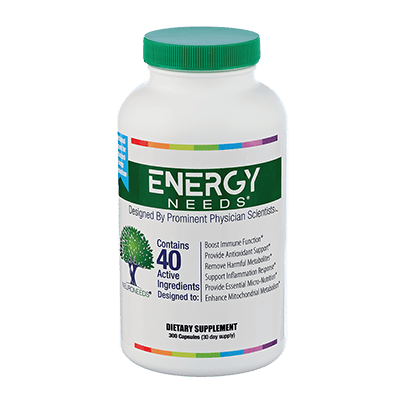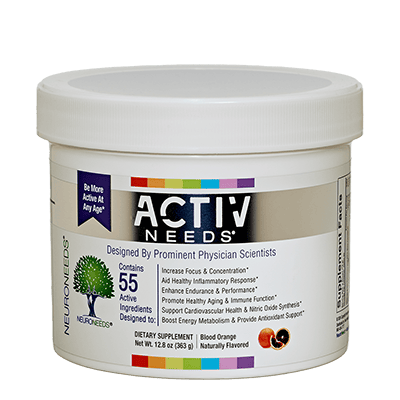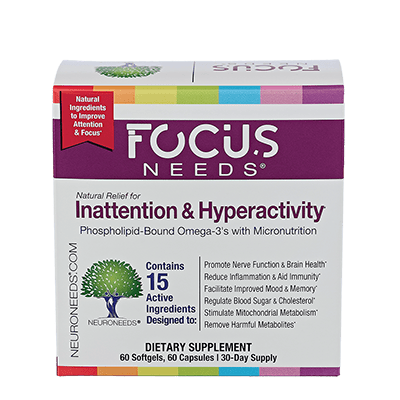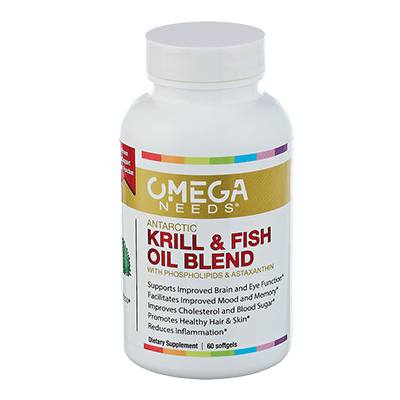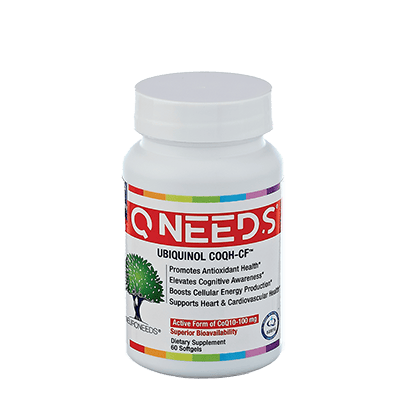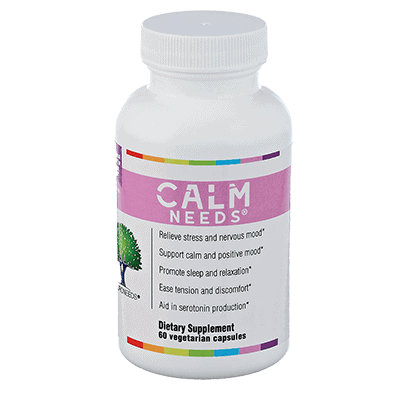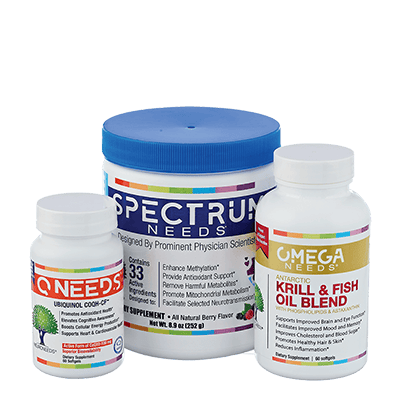$84
OmegaNeeds® is a concentrated supplement of omega-3 fatty acids consisting of a blend of fish and krill oils. This provides the benefits of both high dosing AND phospholipids, for the promotion of general (including heart) and brain health.
No major brands on the market combine these important oils together, until now.
- Supports Improved Brain and Eye Function*
- Lessens Frequency and Severity of Migraines*
- Facilitates Improved Mood and Memory*
- Manages High Cholesterol Profiles*
- Improves Blood Sugar Regulation*
- Promotes Healthy Hair & Skin*
- Reduces Inflammation*
*These statements have not been evaluated by the Food and Drug Administration. This product is not intended to diagnose, treat, cure, or prevent any disease.
You may have heard about omega-3 fatty acids (abbreviated omega-3s and pronounced “omega threes”). They are often recommended by physicians and other health care providers for good heart health, including improved lipid/cholesterol levels, and for good general health, including in blood sugar, joints, hair, and skin. You may also have heard that omega-3 fatty acids have been studied in many brain disorders, and overall have been found to be effective in several studies, including in autism and ADHD. Main commercial sources of omega-3s are from fish oil and krill oil.
![]() Fish oil:
Fish oil:
- Source: Small oily fishes (e.g., , sardines, anchovies) found in cold ocean waters.
- Advantage: Relatively inexpensive, so high dosing is available in premium products to promote health throughout the body including heart health.
- Disadvantage: Brain uptake is questionable and commercial products may not improve brain health.
- Key information: Premium fish oil products provide high levels of omega-3s for optimization of general health, including heart health.
- Why take fish oil? To promote excellent heart health as well as general health.
![]() Krill oil:
Krill oil:
- Source: Krill (a crustacean related to shrimp) found in cold ocean waters.
- Advantage: Omega-3s from krill, but not fish, are bound predominately in the form of phospholipids. This greatly facilitates their uptake into brain for optimized brain health.
- Disadvantage: High dosing is impractical due to costs, and the lower dosing found in commercial products may not improve heart and general health. The FDA does not allow for heart health claims with dosing below 800 mg a day, a threshold that would be extremely expensive using krill as a source.
- Key information: Omega-3 uptake (entrance) into brain is mostly a result of the MFSD2A system. MFSD2A transport is highly efficient at lower concentrations, but ONLY transports omega-3s bound to phospholipids (present in krill, but not fish).
- Why take krill oil? To promote excellent brain health.
Thus, in the past, consumers had a choice:
- Take fish oil and promote good heart and general health, but brain health may not be improved.
- Take krill oil and promote good brain health, but heart and general health may not be improved.
Why not have both? ![]() +
+ ![]()
OmegaNeeds® is a blend including high-dosing of omega-3 fatty acids from fish and phospholipid-bound omega-3s from krill oil, for the promotion of both heart and brain health. OmegaNeeds® also contains additional phosphatidylserine (PS), an important component of brain health.
OmegaNeeds® about 65% oily fish and 35% krill*.
Total of 2 capsules/day:
- Omega-3 fatty acids 920 mg**
- EPA 500 mg
- DHA 325 mg
- Phospholipids 275 mg
- 225 mg from seafood oils including phosphatidylcholine (PC)
- 50 mg added phosphatidylserine (PS)
- Astaxanthin 300 mg (from krill)
*The exact composition will vary from batch to batch as testing of the compounds within each catch is performed to ensure that the claims on our label are met or slightly exceeded every time.
**The figures do not add up as there are lower levels of additional omega-3s, especially ALA and DPA.
OmegaNeeds® Active Ingredients:
Most NeuroNeeds® products consist of highly-purified nutrients (e.g., vitamins & minerals). OmegaNeeds® is different from our other products in that the contents are (mostly) partially purified oils from oily fishes (anchovies, sardines,), and crustaceans (krill). These oils contain multiple compounds, and only some of the most numerous and/or important are listed below. EPA, DHA, PC, PS, and astaxanthin are components of the krill and/or fish oils that comprise OmegaNeeds®. Additional phosphatidylserine (PS) is added to boost the amount of this important phospholipid.
Omega-3 fatty acids, including eicosapentaenoic acid (EPA) and docosahexaenoic acid (DHA)
Phospholipids, including phosphatidylcholine (PC) and phosphatidylserine (PS)
Click on each of the listed active ingredients (above or left) to obtain practical information on the main active contents of OmegaNeeds®. This information is neither a full disclosure of all relevant information nor an academic text. In particular, these ingredients are used frequently by others in the treatment of a variety of conditions, some with little to no scientific backing, and inclusion herein does NOT reflect a medical recommendation or endorsement. Additionally, this site does not include all side effects reported. Please consult your physician and/or seek additional sources as appropriate, especially if you have any medical conditions or take any medications.
Frequently Asked Questions
OmegaNeeds® is a blend of fish and krill oil. This provides the benefits of both phospholipids (for the promotion of brain health) AND high dosing (for the promotion of heart and general health). No major brands on the market combine these important oils together, until now. OmegaNeeds® also contains phosphatidylserine (PS), another important component of brain health found in few supplements.
OmegaNeeds® is a source of omega-3 fatty acids (omega-3s). Omega-3s are critical for life, including for the proper function of brain and heart. Humans cannot make omega-3s and they must come from the diet. However, while historical diets were often loaded in these essential nutrients, most modern diets are quite low. Oils from certain cold-water fishes (especially herring, sardines, anchovies, and mackerel) have high concentration of omega-3s, which facilitates entrance into heart and other organs, and thus these oils are often recommended for heart and general health. Krill oil has omega-3s bound into phospholipids, which greatly facilitates entrance into brain, and thus krill oil is often recommended for brain health. OmegaNeeds® is a blend of the above listed cold-water fishes AND krill oil. OmegaNeeds® also contains phosphatidylserine (PS), an important component of brain health added in few supplements. Thus, OmegaNeeds® is an excellent supplement for people interested in both physical and mental/brain health.
To learn more about the science and health of omega-3 fatty acids, see additional FAQs below.
- Anyone interested in good brain health. The omega-3 fatty acids present in OmegaNeeds® have been shown in studies to be helpful in people with multiple disorders of the brain, including autism, ADHD, migraine, depression, anxiety, chronic pain, and dementia.
- Anyone interested in good heart health. The omega-3 fatty acids present in OmegaNeeds® have been shown in studies to be helpful in people with multiple disorders of the heart and blood vessels, including reduction of blood pressure, improved lipid (cholesterol, triglyceride) levels, weight control, and protection against cardiovascular disease (e.g., heart attack).
- Anyone interested in good general health. The omega-3 fatty acids present in OmegaNeeds® have been shown in studies to be helpful with inflammation, autoimmune disease, diabetes/blood sugar, macular degeneration (age-related blindness), and in many other conditions, see list below.
Selected studies and reviews demonstrating relationships between omega-3 fatty acids in various conditions (Library of Congress PMID listings shown):
- ADHD 11817499, 14669965, 17435458, 21807480, 21961774, 26966583, 27555775 28741625, 29207548, 32759851
- Anxiety 21784145, 30646157, 34959972
- Autism 11487301, 16920077, 18072818, 22370992, 24839884, 28218722, 29490101, 30744880, 32759851
- Autoimmune disease 12480795, 15290734 (lupus), 15723739 (RA), 26362904 (MS)
- Cardiovascular disease/blood lipids 11997274, 18774613, 19487105, 22113870, 22180524, 22317966, 25458786
- Depression/bipolar 12888186, 15907142 (multiple psychiatric disorders), 17685742, 18247193, 21721919, 22910528, 24757497, 26188642
- Dementia 19262590, 19523795, 25592004, 28466678
- Diabetes (especially autoimmune-related) 14668274, 25329601, 30684965
- Inflammation 12480795, 20727522, 21784145, 24505395
- Macular degeneration 24557349, 34749130, 34829613
- Metabolic syndrome 19593941, 20727522, 23456976
- Pain 7588501, 8623866, 24049587, 28495596
- Skin disorders 20620762, 21760742, 34681353
- Sleep disorders 21897776, 24605819, 24812543
- Adults and adolescents over 40 kg (> 88 lbs): Two gel capsules daily, to be taken at one time or one gel capsule twice daily.
- Adolescents and children 20-40 kg (44-88 lbs): One gel capsule daily.
- Children under 20 kg (< 44 lbs): Consult your physician.
We recommend taking this product with meals, at least at first, as gastrointestinal side effects, might occur, including nausea, diarrhea, and/or reflux (GERD).
The American Heart Association (AHA) states that taking up to 3,000 mg of fish oil daily in supplement form is considered safe. At recommend adult dosing, OmegaNeeds® contains 1,000 mg of total oil, and is thus well under this limit. The maximum tolerated amount of krill oil is less clear, but most sites advocate taking between 250-500 mg a day, and OmegaNeeds® averages at 400 mg, which is within the recommend range. Do not take more than the amount on our label unless you discuss it with your doctor first.
Side effects with fish and krill oils are rare and generally mild; here are some of the potential issues that might arise. This is not a complete list.
- Fishy taste/aftertaste in some.
- GI effects, including nausea, diarrhea, and/or reflux (GERD). For this reason, it is advisable to take this product with meals, at least at first.
- Occasional fever, chills, body aches, pain, skin rash.
- Increased bleeding, including nose bleeds, and decreased blood clotting. For this reason, some surgeons recommend stopping the product before surgery.
- Complicated potential effects on blood sugar, so care should be taken in certain individuals with problematic high or low blood sugar.
- Complicated potential effects on blood pressure, so care should be taken in certain individuals with problematic high or low blood pressure.
- Interactions with medications, especially some used for blood pressure or blood sugar control, immunosuppression (cyclosporine, sirolimus, tacrolimus), blood clotting (Coumadin), and chemotherapy (platinum agents).
- Allergic reactions to fish or seafood (krill). For this reason, this product may not be indicated for those with seafood allergies.
Fatty acids are an unbranched hydrocarbon chain with an acid group (COOH) at one end. Humans and other animal species require several different fatty acids of different chain lengths and saturation levels. Chain length refers to the number of carbon atoms linked together, end to end, in the fatty acid. Humans can add and subtract carbons to alter the chain length. Saturation refers to the number of double bonds. Fatty acids without any double bonds are referred to as “unsaturated”, and these constitute most of the main fatty acids made by humans and present in the animal products that we consume. Double bonds can add kinks (bends) to the fatty acid and provide substantial changes to their properties. Humans have very limited abilities to add double bonds to fatty acids. Thus, there are many fatty acids that are essential for life that humans cannot make, and we need to obtain from our diet. As other animals cannot make these unsaturated fatty acids either, we obtain them from plants in our diet (e.g., vegetables), or from certain animals that themselves obtain them from plants or algae.
In designating fatty acids, the length of the carbon chain and position of the double bonds are listed. The position of the double bond is counted starting with the acid group of the fatty acid. For example, oleic acid, common in olive oil, is designated as C18:1 cis-9. This translates to 18 carbons, one double bond at position 9 (between carbons 9 and 10), and the double bond is in the cis position. “Cis” means that the chains are both on the same side of the double bond, bending the molecule. “Trans” fatty acids rarely occur in nature but are induced in some food processing; they are generally considered to be detrimental to human health.
Some highly unsaturated fatty acids (containing multiple double bonds) are very important in health. Many of these are called omega-3 fatty acids. Omega is the last letter of the Greek alphabet, and in fatty acid designation, “omega” refers to the last carbon in the chain (the end opposite the acid group). A double bond 3 carbons from the far end of the chain is referred to in speaking as “omega three” and in writing as “omega-3”. Two common and important omega-3 fatty acids are docosahexaenoic acid (DHA) and eicosapentaenoic acid (EPA). DHA is C22:6, cis-4, 7, 10, 13, 16, 19, but often designated simply as 22:6n3 (22 carbon chain, six double bonds in total, the last double bond at the omega-3 position; cis orientation of all the double bonds is assumed). EPA is C20:5, cis-5, 8, 11, 14, 17, but often designated simply as 20:5n3.
While there are several omega-3 fatty acids, DHA and EPA are particularly important, and receive by far the most attention, in terms of supplementation in health and disease. These fatty acids are critical for membrane fluidity and other properties.
Docosahexaenoic acid (DHA; 22:6n3) is the most abundant polyunsaturated (two or more double bonds) fatty acid in the brain. Most of brain DHA is esterified (a type of chemical bond) to phospholipids located in membranes, predominately as phosphatidylcholine (PC), phosphatidylserine (PS), and phosphatidylethanolamine (PE). DHA is located throughout the brain, with relatively higher concentrations in gray matter and especially at synapses. DHA has many beneficial effects on health, and is essential for brain development, learning, and vision. DHA levels in the brain rapidly increase around the time of birth and in the first two years thereafter.
DHA is involved in numerous processes in the brain, including the maintenance of membrane fluidity, neuronal survival, synaptic neurotransmission, and neuroinflammation. Thus, it is not surprising that disturbances in brain DHA metabolism have been implicated in multiple neurological disorders, including those considered to be neurodegenerative and psychiatric. Among these disorders are autism, ADHD, bipolar disorder, depression, epilepsy, Alzheimer, Parkinson disease, and cerebral ischemia (from stroke, heart attack, drowning, etc.). A potential role of DHA in the prevention of these and other neurological disorders has been advocated. In rats with cerebral ischemia, DHA improves neurological functions and decreases the degree of brain damage visible by microscopy [PMID: 19542051].
Eicosapentaenoic acid (EPA; 20:5n3) is present in brain only at very low levels. However, EPA is converted into DHA in the brain. EPA is becoming increasingly recognized as important for brain in health and disease. The use of EPA has less studied the DHA in various neurological conditions. “Although DHA appears more effective for neuroinflammatory conditions, EPA is more beneficial for depression” [PMID: 30530735]. Most studies have used the two together, and they naturally occur together in products derived from both fish and krill oil.
In humans and other vertebrates, most fatty acids are part of triglycerides, often referred to simply as “fat”. A triglyceride consists of three fatty acids, which can be of the same or different types, bound to glycerol (a 3-carbon alcohol). Phospholipid are another type of fat in which one of the end carbons of glycerol is bound to a compounded phosphate and the other two carbons are bound to fatty acids. Usually, the phosphate is compounded with choline, serine, inositol, or ethanolamine, and these fats are referred to as phosphatidylcholine (often abbreviated as PC), phosphatidylserine (PS), phosphatidylinositol (PI), or phosphatidylethanolamine (PE), respectively. The two fatty acids can be the same of different types and can be omega-3 fatty acids. Phospholipids are critical in many processes, including in mitochondrial energy metabolism, and in many aspects of health, especially in the brain and heart.
Alpha-linolenic acid (ALA, C18:3n3) is an important omega-3, essential fatty acid. Humans can convert ALA to EPA. Humans can then convert EPA to DHA. However, brain has very limited capacity to synthesize DHA and ≤ 0.2% of the ALA entering the brain is converted to DHA. Almost all DHA and EPA in the brain is imported from the blood. While human liver has the ability to convert ALA to EPA to DHA, a major limitation is that all these omega-3s are essential. We cannot make ALA (except from other omega-3s such as EPA), and ALA is one of the main essential fatty acids that we obtain from plants. Humans can interconvert ALA, EPA, and DHA, but cannot put the double bond into the omega-3 position. These fatty acids must come from the diet. For people whose diet is low in fruits, vegetables, and seafoods, all these omega-3 fatty acids can be deficient. Thus, while we can interconvert these fatty acids, the omega-3s in general must come from the diet.
The main sources for EPA and DHA are from algae, either directly or indirectly. Western diets usually are low on algae. Since algae is the main base of the oceanic food chain, seafood is high in omega-3 fatty acids from algae. Cold-water oceanic animals are particularly rich in omega-3 fatty acids, which become increasingly concentrated in organisms the further they are up the food chain. Some fish can also source omega-3s from their own gut flora. Thus, the main dietary source of omega-3s in most Western populations is from seafood.
Thus, a diet rich in seafood is an excellent source of omega-3s. However, seafood can be contaminated by mercury and other heavy metals, in which concentrations also accumulate up the food chain. Additionally, seafood is expensive, not available everywhere, and not preferred by many people. Also, there are issues regarding the sustainability of massive fishing on natural marine populations. For these reasons, seafood-derived oils, either from small oily fishes (mackerel, anchovies, herring, sardine) or crustaceans (krill), is preferred. Good sources are high in omega-3 fatty acids, very low in mercury and other heavy metals, and sustainably fished. OmegaNeeds® is one such source.
Phospholipids are particularly abundant in krill, in which most of the EPA and DHA are complexed as part of phospholipids.
There are two major mechanisms in which most omega-3 fatty acids enter brain. This has been studied more extensively for DHA.
- Passive diffusion across the cell membrane
- MFSD2A-mediated transport
Cell membranes are composed mostly of lipids, for which fatty acids are a major component. DHA from the blood can directly enter the outside side of a cell membrane, “flip” over to the inner side of the membrane, then disassociate from the membrane to enter the cell. This transport by “passive diffusion” occurs from areas of high concentration to areas of low concentration. By passive diffusion, the tissue concentration in brain, heart, or other organs cannot exceed that of the blood by this mechanism. Thus, to increase tissue concentrations beyond usual levels, very high blood levels are needed. This is exactly the mechanism by which many of the premium, high-potency omega-3 fatty acid products on the market work. These products contain very high amounts of omega-3 fatty acids in order to substantially raise the concentration in the blood, and thus to raise the concentration in the tissues.
However, most of the DHA in the brain enters by way of the MFSD2A system [PMID: 24828044]. MFSD2A is expressed exclusively on the endothelium of the blood-brain barrier, whereas it is found at high concentration. The blood-brain barrier consists of the cells lining the blood vessels within the brain, which fit tightly together limiting transport into brain in order to protect this vital organ. Mice lacking MFSD2A have markedly reduced levels of DHA in brain and loss of neurons (nerve cells) in important brain areas such as the hippocampus and cerebellum. These mice have cognitive deficits (mental retardation), severe anxiety, and small heads. Humans born with genetic mutations in MFSD2A have cognitive deficits, small heads, spasticity, seizures, and early death [PMID: 26005865, PMID: 26005868]. Brain imaging usually shows abnormalities related to a loss of neurons, and cellular studies showed much reduced DHA transport rates [PMID: 26005868]. Additionally, mice with genetic mutations that remove MFSD2A function have 50% lower brain DHA levels when compared to littermates without the mutation, attributed to significantly reduced brain DHA uptake [PMID: 24828044].
Studies demonstrate that over 80% of DHA in the body is esterified (a form of chemical bond) in phospholipids [PMID: 24036166]. MFSD2A transports DHA into brain only if esterified in phospholipid, in particular phosphatidylcholine (PC), but also phosphatidylserine (PS) and phosphatidylethanolamine. However, MFSD2A transports very little DHA into brain if esterified in triglycerides or unesterified (by itself, free fatty acids) [PMID: 24828044]. Omega-3 fatty acids, including DHA, are naturally esterified with PC in products derived from krill. Thus, krill-based products have a substantial advantage in terms of promoting brain uptake of DHA. On the other hand, brain DHA uptake is more difficult when present in triglycerides, as is the case with products derived from fish. Blood DHA levels must be highly elevated in order to facilitate brain uptake from passive diffusion
EPA esterified in PC (PC-EPA) was shown to increase brain EPA levels over 100-fold, while free EPA had little effect. “Furthermore, LPC-EPA, but not free EPA, increased brain DHA 2-fold” [PMID: 30530735]. Krill oil, and OmegaNeeds®, contain high amounts of PC-EPA.
Supplementation with the omega-3 fatty acids DHA and/or EPA has shown modest success in controlling symptoms related to ADHD. While not all studies have demonstrated a benefit, most did, including the randomized, placebo-controlled trials summarized here:
- Improved attention, reduced hyperactive and defiant behaviors, and improvement in cognition and emotion in ADHD children on DHA 480 mg/day, EPA 186 mg/day, and additional nutrients (gamma-linolenic acid 96 mg, vitamin E 60 IU, cis-linoleic acid 864 mg, arachidonic acid 42 mg, and thyme oil 8 mg) [PMID: 11817499].
- Improved attention and oppositional behaviors in children on DHA 480 mg, EPA 80 mg, arachidonic acid 40 mg, gamma-linolenic acid 96 mg, and vitamin E 24 mg [PMID: 14669965].
- Marked improvement in ADHD symptoms, including improved attention control, and vocabulary performance in children supplemented for 15 weeks with EPA as opposed to those receiving placebo [PMID: 17435458].
- Improvement of ADHD symptoms (impulsivity, inattention), mood and behavioral problems on phosphatidylserine (PS) containing 120 mg total EPA and DHA [PMID: 21807480].
Additional references discussing omega-3 therapy in ADHD:
- A meta-analysis (an in-depth evaluation comparing multiple studies together) from 2018 [PMID: 28741625] stated “there is evidence that n-3 PUFAs (omega-3) supplementation monotherapy improves clinical symptoms and cognitive performances in children and adolescents with ADHD, and that these youth have a deficiency in n-3 PUFAs levels. Our findings provide further support to the rationale for using n-3 PUFAs as a treatment option for ADHD.”
- An earlier meta-analysis from 2011 [PMID: 21961774] revealed moderate efficacy in comparison to standard drug treatments, yet “given its relatively benign side-effect profile and evidence of modest efficacy, it may be reasonable to use omega-3 fatty supplementation to augment traditional pharmacologic interventions or for families who decline other psychopharmacologic options.”
- A review article from 2016 [PMID: 27555775] stated “(i)n conclusion, there is evidence that a ω-3 PUFA (omega-3) treatment has a positive effect on ADHD. It should be added that treatment could be more effective in patients with mild forms of ADHD. Moreover, the dosage of stimulant medication could be reduced when used in combination with ω-3 PUFA supplements.”
- Omega-3 and other natural supplements in ADHD are also summarized in PMID 26966583, 29207548, and recently (2020) 32759851.
Medications are often effective and appropriate in the treatment of behavioral over-activity, and in particular in ADHD can sometimes help get a failing student back on track again. NeuroNeeds® does not advocate nutrition over medication in all or most cases. However, appropriate nutritional therapies can often be an effective complementary approach along with appropriate medical therapies. OmegaNeeds® can be an important part of nutritional therapy in people with ADHD. Also, consider adding mitochondrial support in the form of SpectrumNeeds® (capsules, 40 active ingredients) or EnergyNeeds® (powder, 2 flavors, 33 active ingredients), in addition to QNeeds® (gel capsules, highly bioavailable ubiquinol form of coenzyme Q10). In Dr. Boles’ experience, nutritional therapies can sometimes reduce the amount of dosage of medication needed, and occasionally eliminate the needs for medications altogether. In addition, medications are not appropriate in all affected individuals.
Supplementation with the omega-3 fatty acids DHA and/or EPA has shown modest success in controlling symptoms related to autism/ASD. While not all studies showed benefit, most did, including the following trials summarized here:
- Significant improvements in the omega-3 group versus placebo were noted in the stereotypy and lethargy subscales of the Aberrant Behavior Checklist Children as well as a non-significant reduction in hyperactivity on 1.3 g of total omega-3 fatty acids per day [PMID: 24839884].
- Significantly improved Aberrant Behavior Checklist for social withdrawal and communication on 240 mg of arachidonic acid (AA)-enriched triglyceride (40 mg/capsule each of AA and DHA, and 0.16 mg/capsule of astaxanthin) [PMID: 22370992].
- Reduction in ASD symptoms per the Brief Infant Toddler Social Emotional Assessment ASD versus placebo on DHA 225 mg, EPA 338 mg, and gamma-linolenic acid 83 mg [PMID: 29490101].
- Reduced irritability symptoms in children with ASD per the Aberrant Behaviour Checklist on DHA 722 mg and vitamin D 2000 IU [PMID: 30744880].
- Benefit on hyperactivity and stereotypy (persistent repetition) in a double-blind randomized controlled trial in children with ASD on DHA 700 mg and EPA 840 mg [PMID: 16920077].
Additional references discussing omega-3 therapy in autism:
- In a meta-analysis (an in-depth evaluation comparing multiple studies together), compared with placebo, omega-3 fatty acids improved social interaction and repetitive and restricted interests and behaviors [PMID 28218722].
- Low blood DHA and/or total omega-3 fatty acid levels have been documented in children with ASD [PMID: 11487301, 28218722], including in nearly 100% of cases [PMID: 18072818], while about 90% of patients with pervasive developmental disorders (PDD) have been found to have low EPA/DHA levels in red blood cell membranes [PMID: 18072818].
- A review paper concluded, “In double-blind, randomized, controlled trials, DHA and EPA combinations have been shown to benefit…autism, dyspraxia, dyslexia, and aggression…” [PMID: 18072818, 32759851].
- Omega-3 and other natural supplements in autism are also summarized in PMID 32759851.
- 30 days at recommended dosing of two gel capsules daily for adults and children over 40 kg (> 88 lbs)
- 60 days at recommended dosing of one gel capsule daily for adolescents and children 20-40 kg (44-88 lbs):
Generally, about 2 years. The expiration date is stamped on each container. As with other products, expiration means that we cannot guarantee the potency (effectiveness) of the product thereafter as longer intervals have not been tested. It does not mean that the product is harmful after that date.
Absolutely! In fact, OmegaNeeds® is designed to add an important niche to optimized nutrition that is not met by SpectrumNeeds® (powder) or EnergyNeeds® (capsules). QNeeds® is another such product designed to add another important niche. Together, these 3 products (OmegaNeeds + QNeeds + either SpectrumNeeds or EnergyNeeds) provide excellent comprehensive supplementation for mitochondrial function, brain health, and general health. However, OmegaNeeds® can also be taken alone (without SpectrumNeeds®, EnergyNeeds®, or QNeeds®).
Yes, especially in a G (gastrostomy) tube. Absorption in a J (jejunal) tube or GJ-tube may be reduced.
Dr. Boles recommends genetic testing in patients with autism and other neurodevelopmental disorders, as many times such testing can be helpful in determining the underlying factors leading for disease in that individual, be it mitochondrial dysfunction, neurotransmitter disorders, channelopathy, axonal transport, and/or other mechanisms. Understanding these underlying factors often allows for targeting therapies. Even in patients with known mitochondrial disease, genetic testing can often identify factors leading to this disease that suggest specific therapies. For more information, see https://neurabilities.com/neurogenomics.

